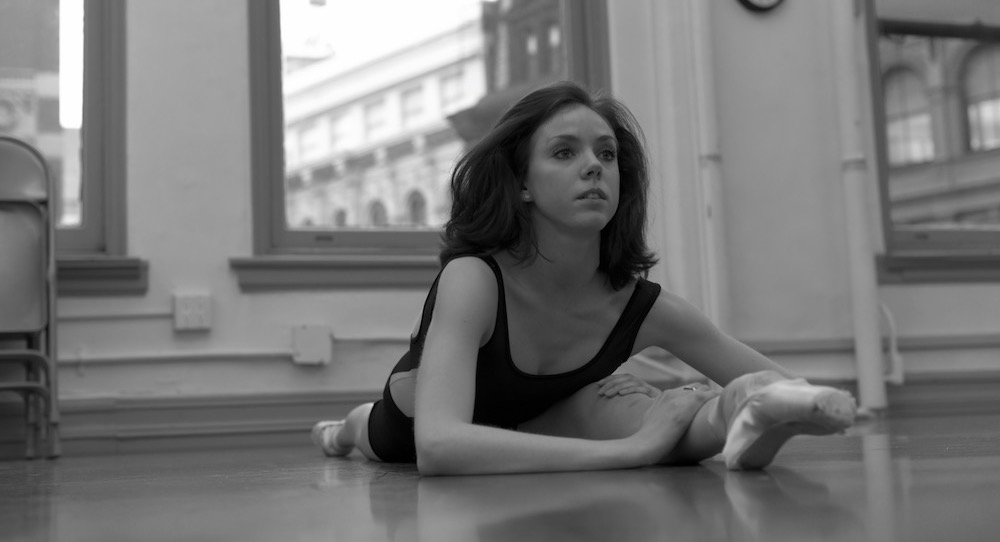We’ve all heard the importance of cross-training for dancers. How methods such as Pilates, yoga, Gyrotonic, resistance training, cardio and, yes, even weight training can complement your dance technique and help keep you strong, versatile and free from injury.
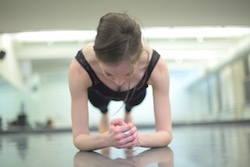
Kathryn Boren. Photo by Avi Snow.
And if you follow American Ballet Theatre (ABT) Corps de Ballet member Kathryn Boren on Instagram, then you can see firsthand how exercising outside of the dance studio translates into a strong, lean, fierce dancer. In her videos, she performs rond de jambe en l’air while standing on a Bosu ball, practices balancing from arabesque to six o’clock penché while holding dumbbell hand weights, and stabilizes herself in a gorgeous à la seconde while tossing a ball back and forth with a trainer. And of course, the graceful dancer in her makes these hardcore exercises look so easeful.
Boren works closely with several personal trainers from independent NYC gym The Dogpound, and together they collaborate on exercises that can benefit her in strengthening her ballet technique. Due to her cross-training regimen, Boren says, she has avoided injuries, increased her stamina and built strength.
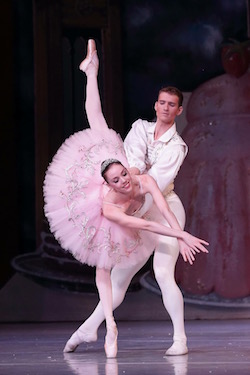
ABT’s Kathryn Boren. Photo by Anthony Crowley.
“I have an overall strength that I didn’t think I could attain as a younger dancer,” she tells Dance Informa. “It’s also given me a more intelligent approach to my dancing and how I treat my body.”
Boren first began cross-training when she joined Staatsballett Berlin at the age of 19. The company’s facility offered an exercise room with resistance cables and weights, and the young professional became curious about how she could incorporate cross-training into her routine. She says she immediately noticed a difference in her body and her dancing and “became obsessed”.
Now, as a member of ABT, Boren works out throughout the busy performance season and during the off-season.
“Before class and rehearsals, I like to start the day with core stabilization exercises,” she explains. “I’ll do these at home before breakfast. I’ve always been an early riser, so that’s just what works for me. I usually do an eight-minute plank series and a few Pilates mat exercises. I also like to do bridges, single-leg bridges and bridge roll-outs on the stability ball. These are great to wake up my hamstrings and glutes. During a rehearsal break or at the end of the day, I try to squeeze in 30-45 minutes of cardio on the elliptical or treadmill. On a day off or a light rehearsal day, I like to focus on stabilization and balance exercises. Using unstable tools like the Bosu ball and Terra Core are great for these!”
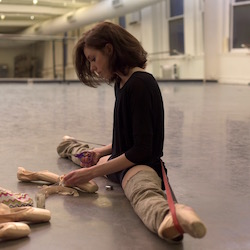
Kathryn Boren. Photo by Avi Snow.
At The Dogpound, Boren works with trainers Kirk Myers, Rhys Athayde, Kevin Mejia and Lucca De Oliveira, all of whom have a wide vocabulary of exercises and training methods. At ABT, she works with two company dancers, Thom Forster and Roman Zhurbin, who have recently become certified personal trainers.
“It’s been great working with someone who really understands you as a dancer, knows your rep and can really create a workout that is centered around this,” Boren says.
Boren’s dedicated cross-training program has kept her injury-free, and she says it has also helped in establishing herself as a more well-rounded dancer. “Ballet is evolving, and choreographers are demanding more from their dancers,” she says. “I think that cross-training and learning as much as you can about your body helps to give a dancer that something extra.”
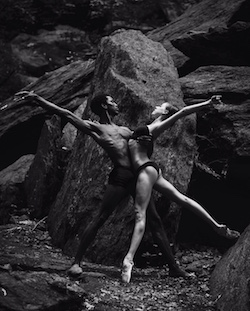
Kathryn Boren. Photo by Lior Sack.
And not only does working out “do a body good”, but Boren says her time in the gym also serves as a type of meditation, that she is able to relax her mind and have fun. In addition, she’s had the chance to meet and work with people outside of the dance studio.
Boren believes cross-training is important for dancers but that it should also be enjoyable and safe. “My advice is to find something you really enjoy and go from there,” she shares. “Maybe it’s swimming, Pilates, working with a personal trainer, but start small. Don’t overdo it the first time you step into the gym! Start small and test your body to see what it can handle; then, soon you’ll have a vast vocabulary of exercises and regimens that you enjoy and benefit from. Also, speak with your physical therapist. If there is a weakness you want to address or something specific you know you need to improve, ask them for advice and what they would suggest.”
To get a behind-the-scenes look at Kathryn Boren’s cross-training journey, follow her on Instagram: @katieboren1.
By Laura Di Orio of Dance Informa.


